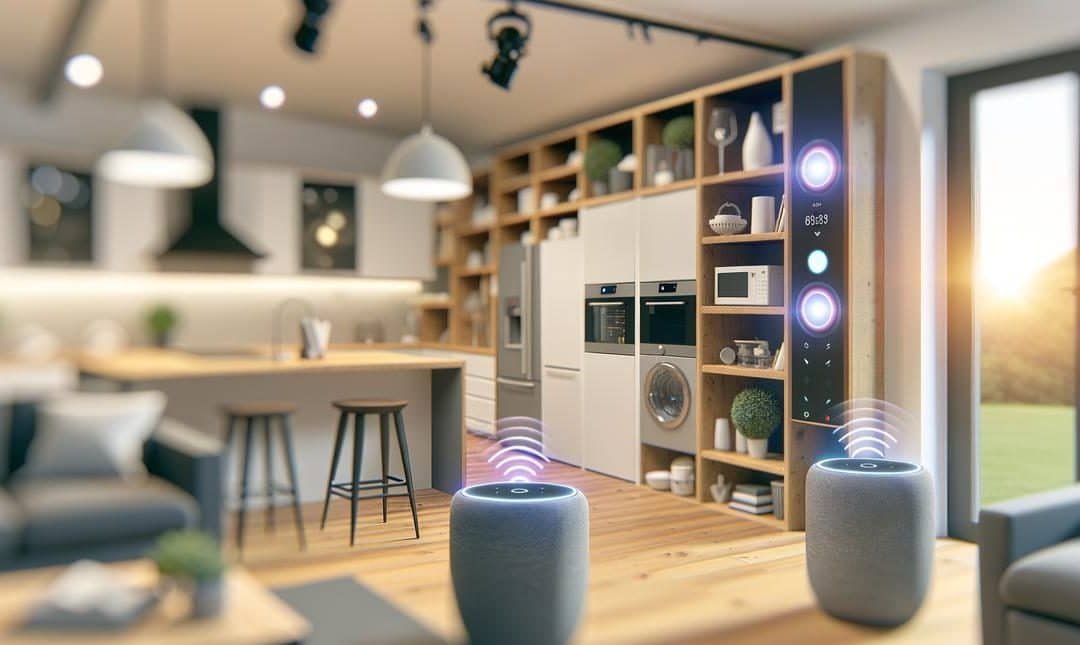Imagine a home that not only responds to your voice but also learns to anticipate your needs. Discover how voice-native agents are revolutionizing smart home automation by orchestrating routines that save time and enhance convenience for homeowners. Dive into the world of AI-driven solutions that bring a seamless, intuitive experience to your fingertips.
The Rise of Voice-Native Agents
Voice agents grew up.
Early versions heard wake words and obeyed one line commands. Useful, but blunt. Now they track context across chats, notice tone, and recognise who is speaking. They pause, they clarify, they handle interruptions without losing the thread. I remember the first time mine asked a follow up question, I blinked, then smiled.
The leap came from better speech models, smarter intent detection, and analytics that read nuance, not just words. We moved from transcription to understanding, from literal to interpretive. If you want a deeper dive, this covers it well, Beyond transcription, emotion, prosody and intent detection.
What does that mean at home, in daily terms,
- Context carryover, yesterday’s preferences colour today’s responses.
- Cue sensitivity, it hears stress, sarcasm, or a whisper and adjusts.
- Routine prediction, patterns become prompts, prompts become action.
So the agent learns that you boil the kettle at seven, dims lights at dusk, and, perhaps, reminds you if the back door is still open. It does not just listen, it infers, then acts with a light touch. Systems like Amazon Alexa now stitch multi turn requests into natural dialogues that feel almost obvious. I think this is where the magic starts, not the showy bits, the quiet wins that save minutes and mental load. The next step, how it choreographs whole-home routines, is where it gets even smarter.
Orchestrating Home Routines
Your home should run itself.
Voice-native agents act like a conductor, linking thermostats, lights, blinds, speakers and locks. They hear one cue, then coordinate across hubs and APIs. Capability mapping stitches scenes, resolves conflicts, and logs what happened. It feels simple, even when the wiring is not.
Say good morning. Heating nudges to 20°C, blinds lift 30 per cent, kitchen lights warm to 2700K. A traffic update plays. Say good night. Doors lock, alarm arms, hallway lights dim for five minutes. Leaving home, geofencing shifts to eco mode.
It adapts to you. Philips Hue remembers your evening colour, your partner prefers daylight. The agent splits scenes by room and person. Weekends run later. School nights mute speakers near the nursery, perhaps. Guests get a temporary profile with simpler commands.
All of this needs speed. Conversations feel natural thanks to real-time voice agents that cut lag. You speak, lights react, everything else cascades. Small touches save minutes each day. Over a year, that is hours back. I think that calm is the real upgrade.
The Role of AI in Enhancing Smart Home Experiences
AI makes smart homes feel personal.
It studies tiny patterns that you barely notice. Bedtime drifts ten minutes later, music taste shifts toward acoustic, heating prefers a slower climb. Over a week, it nudges scenes and set points to match you, not a template. You still speak to confirm, perhaps to correct, and the system adapts again. It learns your comfort thresholds, then gets braver with context, rain coming, guests arriving, late finish on your calendar.
Voice‑native agents turn voice into intent, and intent into timing. They parse tone, presence, and location, then act only when the moment is right. I think the magic shows up in the small acts. I caught mine suggesting warmer light before rain, which felt uncanny, almost cheeky.
There is a deeper layer that rewards curiosity. AI automation consultants bring tools that spark ideas and trim friction. Quick wins arrive through prompt libraries for household briefs, energy snapshots you can act on, and simple experiments, yes, A or B, which routine feels better. For a broader view on tailored experiences, Alex has written about personalisation at scale.
One example, Philips Hue scenes that shift with your habits rather than fixed times. I like the calm, though sometimes I want control back. That is fine, you can take the wheel, then hand it over again when you are ready.
Empowering Your Home with Expert Guidance
Smart homes work better with expert hands.
Voice native agents shine when they are orchestrated, not just installed. Routines need clear roles, clean triggers, and fallbacks for when devices sulk. A vendor neutral hub like Home Assistant keeps your lights, heating, and security listening to the same plan, not talking over each other.
You do not need to figure it all out alone. The right partner brings three layers that move you faster:
- Comprehensive learning, short videos, checklists, and playbooks that make complex steps simple.
- Prebuilt platforms, proven flows for voice routines, alerts, and multi room scenes you can adapt.
- Accessible tools, dashboards and templates so you can tweak without breaking anything.
I have seen routines fail because of latency or noisy prompts. Experts tighten prompts, add privacy guardrails, and set test runs for every change. They shift critical commands to on device models to cut lag. If that feels a bit technical, skim this piece on on device voice AI that works offline. It explains why timing and privacy matter, perhaps more than you think.
If you want clarity, book a quick chat. Book a consultation with Alex Smale and tap into a supportive community, audits, and ongoing guidance. You could tinker for months. I think one session will pay back this week.
Final words
Voice-native agents are paving the way for a new level of smart home automation. By streamlining routines and offering predictive convenience, they embody the future of home technology. Embrace AI-driven solutions to create an environment that is responsive, efficient, and tailored to your lifestyle needs. For further guidance, consider expert consultancy to maximize these benefits.

